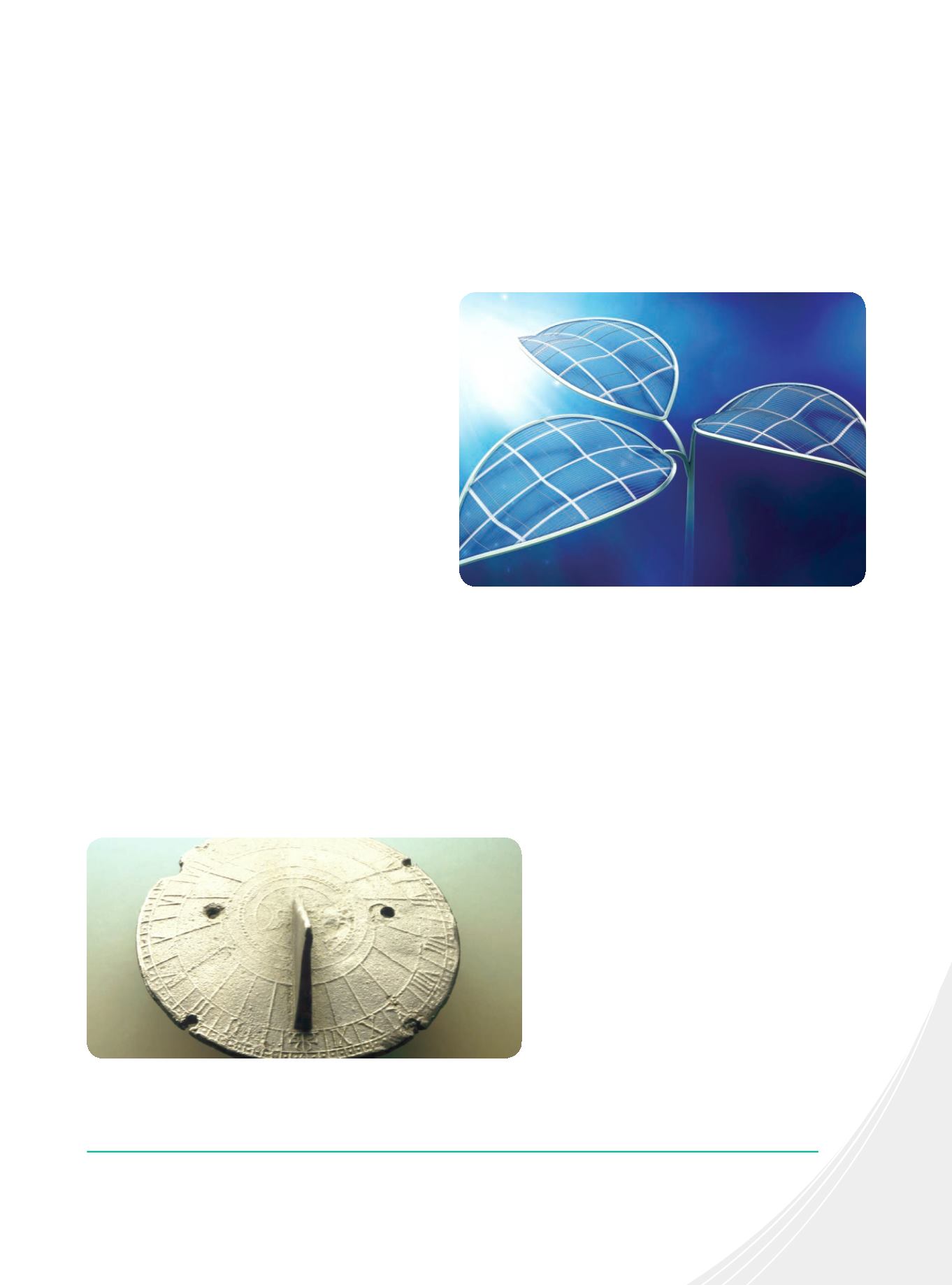

11
AVEC L’ACADÉMIE DES SCIENCES
2015
Surfaces Beside Themselves
For a little more than a century, mathematicians have been interested in surfaces that are far less smooth than those that were
described and studied when geometry began, more than 2 000 years ago. Origami, smooth fractals, Brownian random surfaces,
"rough" surfaces revealed part of their hidden treasure at this session proposed by the Académie (“
Les surfaces dans tous leurs
états
”, 7 April 2015
8
).
Chemistry and Solar Energy
It is considered that, as fossil fuel will dry up, a shortfall
of 14TW may occur by 2050. Solar energy raises high
hopes for tomorrow’s energy production. During this
session, the promising contributions of chemistry to this
great question were discussed, on the first hand with re-
gard to the capture of solar energy and its transformation
into electricity or chemical fuel: very advanced projects
were presented, using hybrid systems of microbes and
artificial leaves or photosystems that artificially reproduce
the principle of photosynthesis. The other major challenge
is the storage of these renewable forms of energy. This
session discussed the different existing types of me-
ga-batteries and presented new approaches that use the
development of photo-ionic cells to allow solar energy to
be directly converted into electricity (“
Chimie et énergie
solaire
”, 5 May 2015
9
).
Allostery and Rational Drug Design
Pharmacology has long been based on the search for molecules that compete with the natural substrate of the target protein – for
example a receptor – for binding to one same fixed site, the active site. As this session of the Académie des Sciences showed,
the strategy is now to use the allosteric properties of the receptors and to develop compounds that target allosteric sites, either
directly binding to them (by agonist or antagonist actions), or playing modulatory roles, whether positive or negative, on the allosteric
transition (“
Allostérie et conception rationnelle de médicament
”, 30 June 2015
10
).
Gnomons and Sundials Throughout the Ages
The next robot sent on Mars by NASA is to use a
gnomon to determine the geographic north of the
planet. How come these millennia-old objects,
whose principle is to stand up to light and cast
shadows, remain relevant for future research? How
did they cross the centuries and how did scholars,
located pretty much everywhere on the planet, make
the most of their potentials? Such are the questions
that the Académie addressed during this session
(“
Gnomons et cadrans solaires à travers les âges
”,
16 July 2015
11
).
8
http://www.academie-sciences.fr/fr/Colloques-conferences-et-debats-par-et-pour-la-communaute-scientifique/lisses-ondulees-froissees-ou-rugueuses-les-surfaces-dans-tous-leurs-etats.html9
http://www.academie-sciences.fr/fr/Colloques/chimie-et-energie-solaire.html10
http://www.academie-sciences.fr/fr/Colloques-conferences-et-debats/allosterie-et-conception-rationnelle-de-medicament.html11
http://www.academie-sciences.fr/fr/Colloques-conferences-et-debats-par-et-pour-la-communaute-scientifique/gnomons-et-cadrans-solaires-a-travers-les-ages.html
©Karen Foley - Photo Fotolia
©Mopic - Fotolia


















